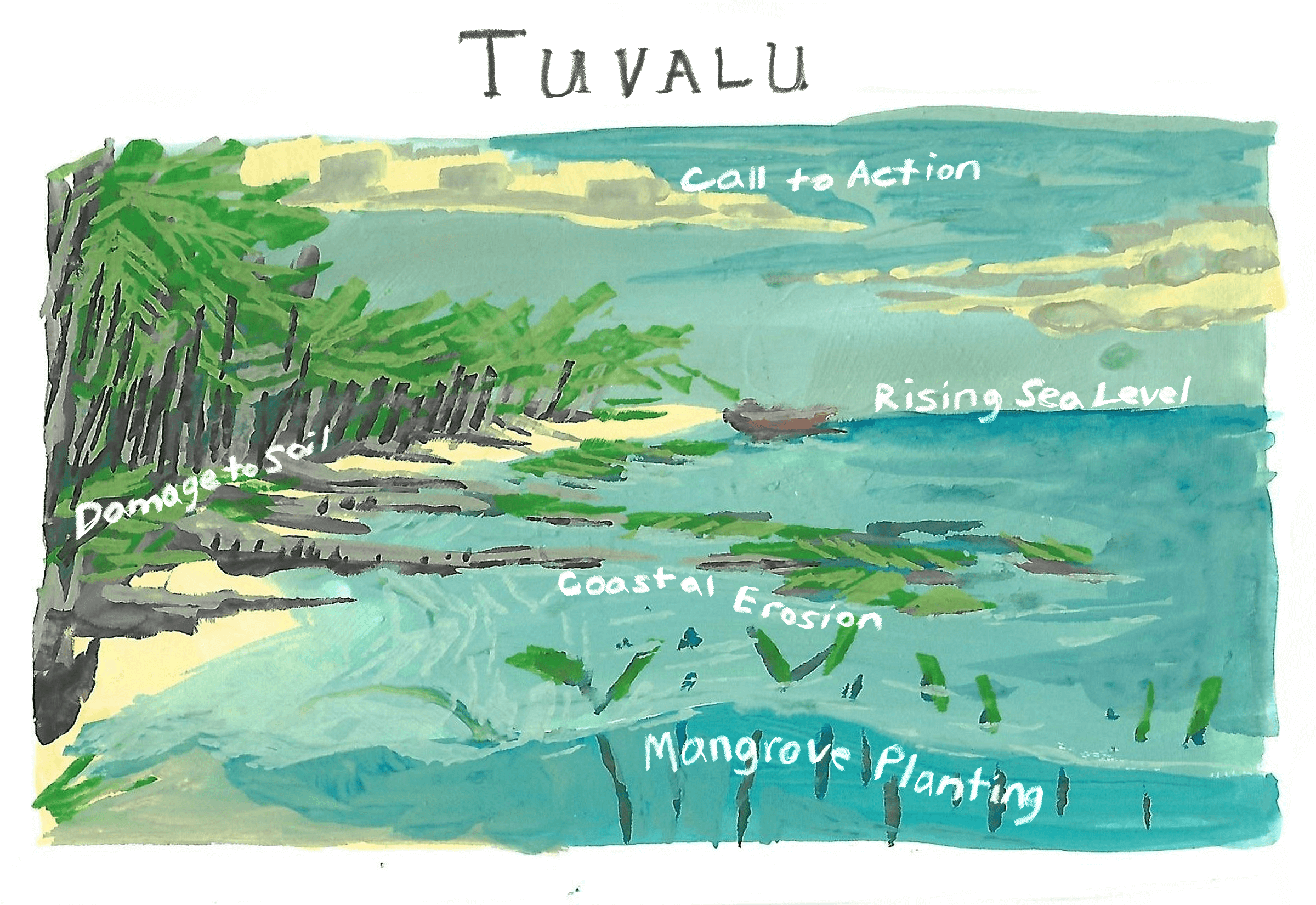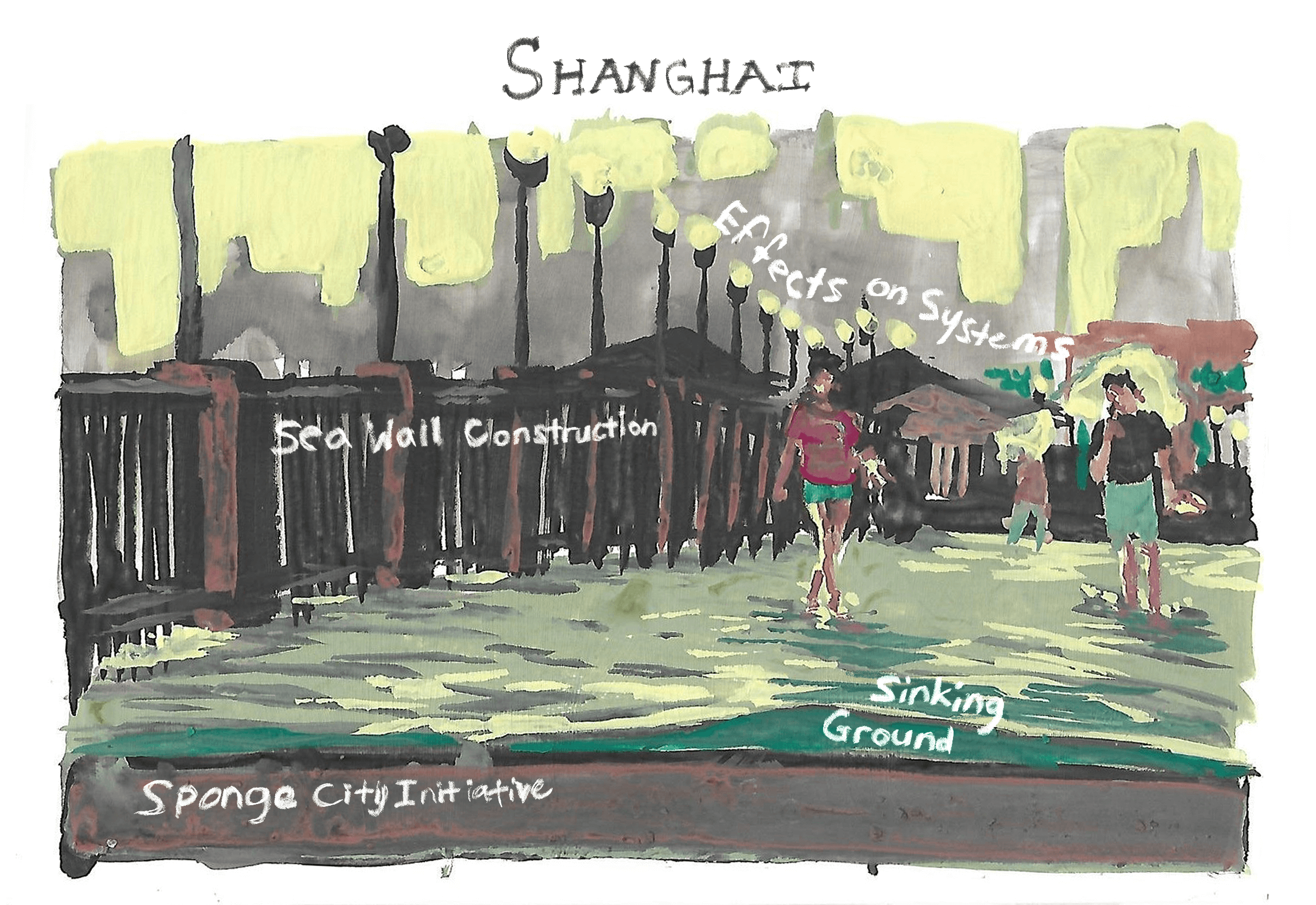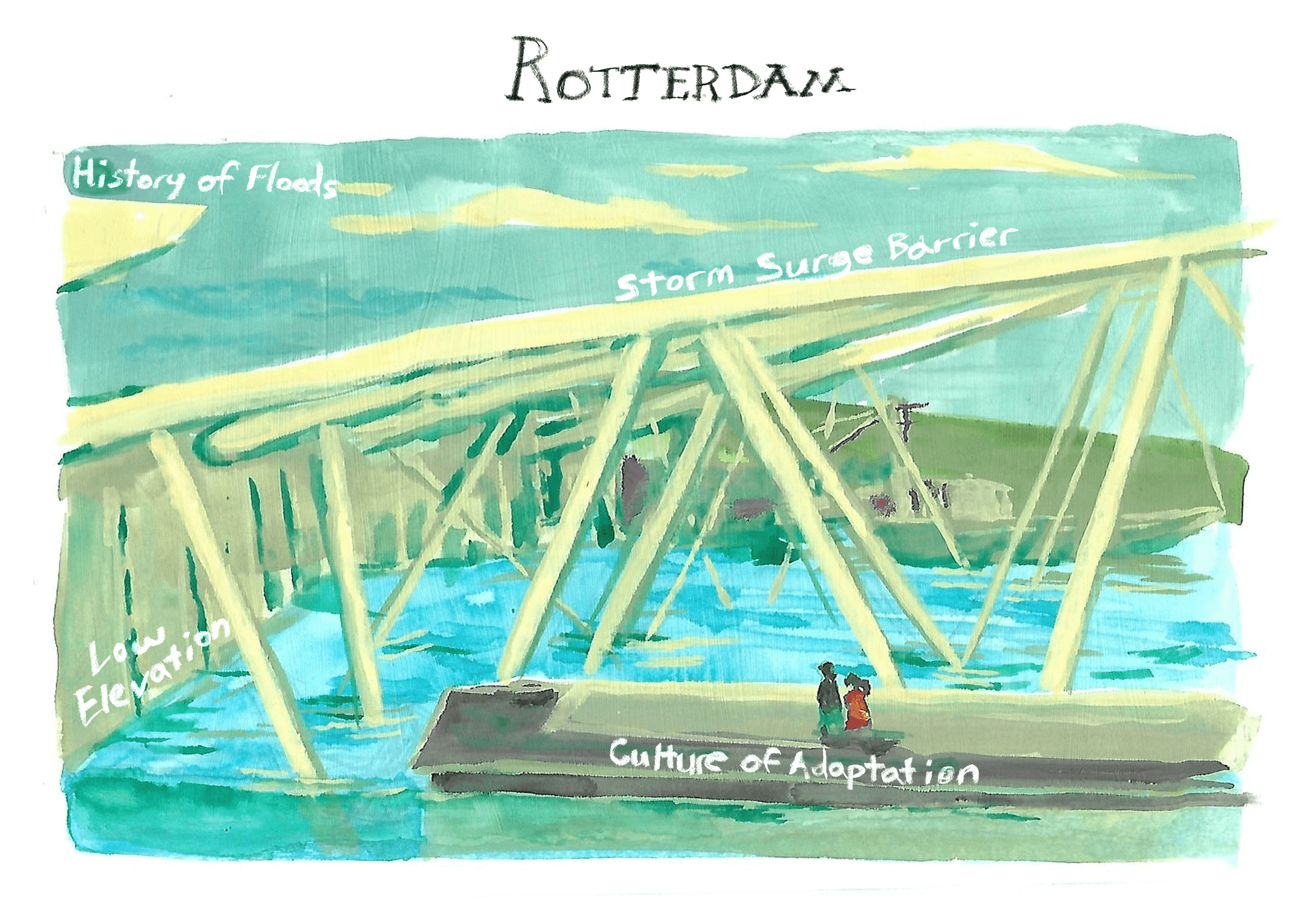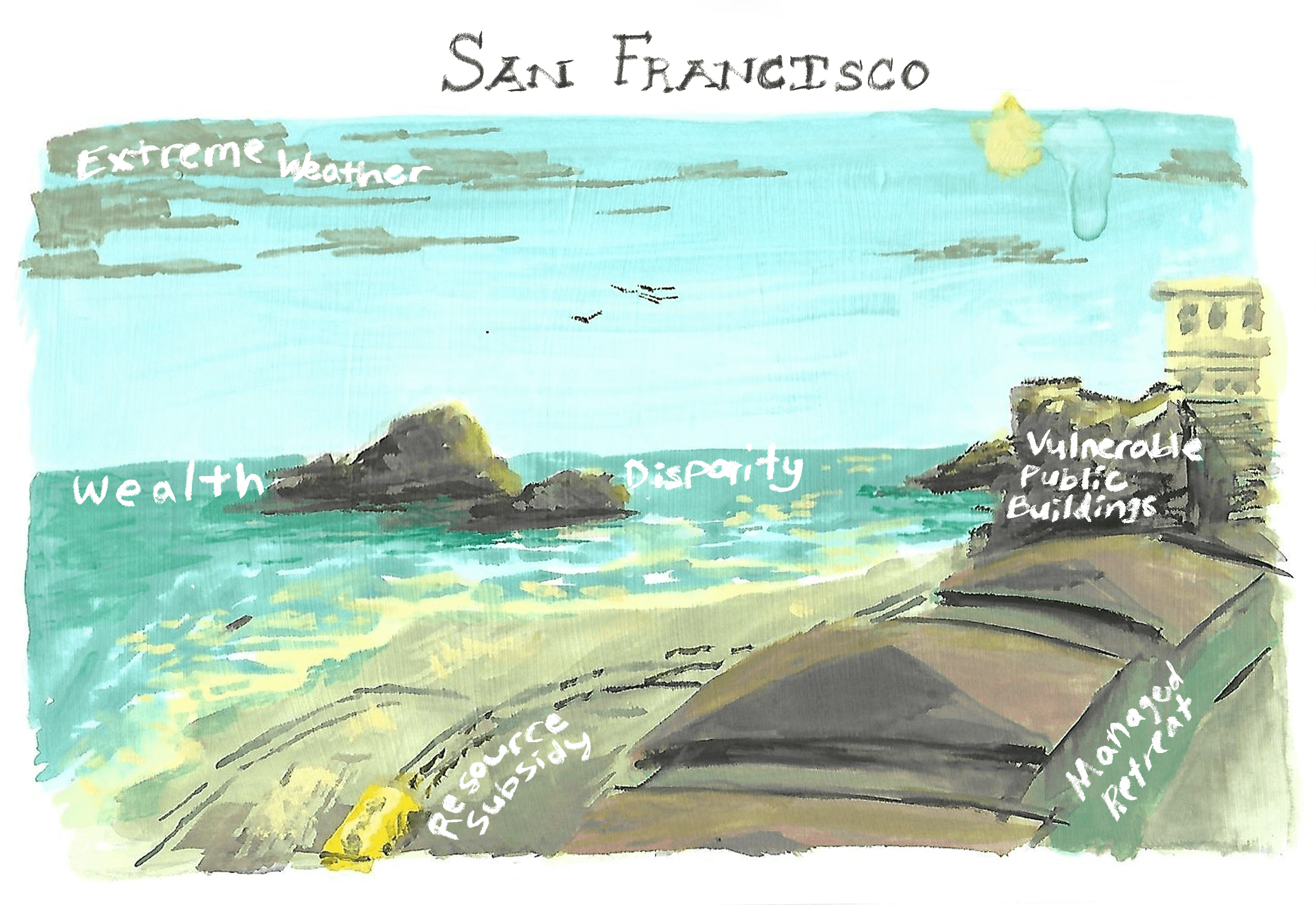Captions
KIRIBATI
RAINWATER HARVESTING directs rainwater for flood reduction as well as for storage of drinkable water in the event of saltwater intrusion. SALTWATER INTRUSION occurs when ocean water overflows and seeps into groundwater, freshwater reservoirs, and soil. DISRUPTED FOOD SUPPLY describes the chain reaction of climate change causing environmental systems to be disrupted which leads to local animal populations dying or migrating. SAFE MIGRATION or “Migrate with Dignity” is a plan that involves residents moving to Fiji (a more elevated island) to avoid the effects of rising sea levels. CORAL REEF DESTRUCTION is an effect of coastal erosion caused by sea level rise as well as rising water temperatures.
TUVALU
CALL TO ACTION describes Tuvalu’s representative’s efforts to urge industrialized countries to work to reduce their emissions. RISING SEA LEVEL is an effect of climate change that is particularly dangerous to small island countries like Tuvalu. DAMAGE TO SOIL includes both erosion of soil as well as over-salination of soil – both due to rising sea levels. COASTAL EROSION is an effect of soil damage that results in the destruction of coastal plant and animal life. MANGROVE PLANTING is a solution carried out by residents that involves planting mangroves around the coast to prevent soil erosion and restore wildlife.
SHANGHAI
EFFECTS ON SYSTEMS describes the way in which disruption of systems in Shanghai (or other urban hubs) affects its surrounding areas as well as other interconnected systems. SEA WALL CONSTRUCTION is a measure taken to dampen the effects of flooding by reducing exposure to rising sea levels. SINKING GROUND is a main exacerbator of flooding-related issues in Shanghai, due to the location’s sandy soil as well as groundwater pumping. SPONGE CITY INITIATIVE refers to the use of porous materials for construction of sidewalks, roads, and other surfaces in order to absorb and reuse water; both reducing the negative effects of flooding as well as conserving water.
ROTTERDAM
HISTORY OF FLOODING describes an aspect of Rotterdam and its surrounding area that is a result of the location’s low elevation and wetland environment. STORM SURGE BARRIER is a high-tech floodgate system in Rotterdam that is designed to let water in or keep water out based on live calculations of sea water elevation data. LOW ELEVATION is a central cause of many of the area’s water-related disasters as well as a factor that is considered in construction, public safety, and other day-to-day activities. CULTURE OF ADAPTATION describes the nature of local solutions to flooding and their emphasis on co-habitation with water such as requiring all children to learn to swim or the construction of floating homes and farmland.
NEW ORLEANS
PREVENTATIVE CONSTRUCTION is a measure taken by city officials that involves designing new buildings and refurbishing existing buildings so that they will be more resistant to destruction caused by excessive flooding. SHORELINE RESTORATION is another solution to the detrimental effects of flooding that involves replacing sediment in areas affected by erosion. TIDAL FLOODING is a characteristic issue of New Orleans that occurs due to a combination rising sea levels, increased frequency of extreme weather, and destruction of mangroves and other natural barriers against storm surges. WATER MANAGEMENT is a response to flooding and storms that intends to both direct water to reduce flooding and use storm water as a resource. CONTINUAL SINKAGE describes a persistent issue in New Orleans that stems from the area’s loose soil, erosion from rising sea levels, and resource extraction.
SAN FRANCISCO
EXTREME WEATHER and its increased frequency in the Bay Area is one reason for frequent and destructive flooding in San Francisco. WEALTH DISPARITY describes an issue that is tied to effects of sea level rise, as those who have less or no access to shelter as well as those in lower-class neighborhoods are significantly more likely to be directly impacted by the effects of flooding and extreme weather. VULNERABLE PUBLIC BUILDINGS demonstrates a situation where infrastructure built in the past was not constructed with current climate issue in mind, resulting in a susceptibility to destruction from effects of rising sea levels. RESOURCE SUBSIDY is a response to coastal erosion that involves the replacement of lost sand on local beaches in order to temporarily halt the effects of erosion. MANAGED RETREAT is a proposed solution to some infrastructure issues caused by flooding and erosion that involves the removal and reconstruction of structures away from the coastline.
JAKARTA
INFRASTRUCTURE DAMAGE is an effect of flooding and erosion in Jakarta, often at a such a rate that reconstruction or repair can not be completed as fast as infrastructure is destroyed. ARTIFICAL LAGOON is a solution enacted with the support of other countries that involves the construction of a large seawall that forms a lagoon for the purpose of drainage during floods. EXTREME SINKAGE is an severe issue in Jakarta that results from both the geologic nature of the area as well as excessive pumping of groundwater for residents and urban systems. GROUNDWATER EXTRACTION is one of the main causes of Jakarta’s flooding issues, but a solution seems far-off as local authorities balance environmental concerns with the needs and health of residents.








